Elevate your outdoor area into a vibrant vegetable garden! Enjoy a constant flow of fresh, homegrown food while enhancing your yard’s beauty. These 17 veggie garden ideas cater to any space, from small balconies to large backyards. Discover how to grow your own fruits, vegetables, and herbs. Transform any area into a lush, productive green space. Prepare to cultivate your own personal garden paradise!
1. Container Gardening for Small Spaces
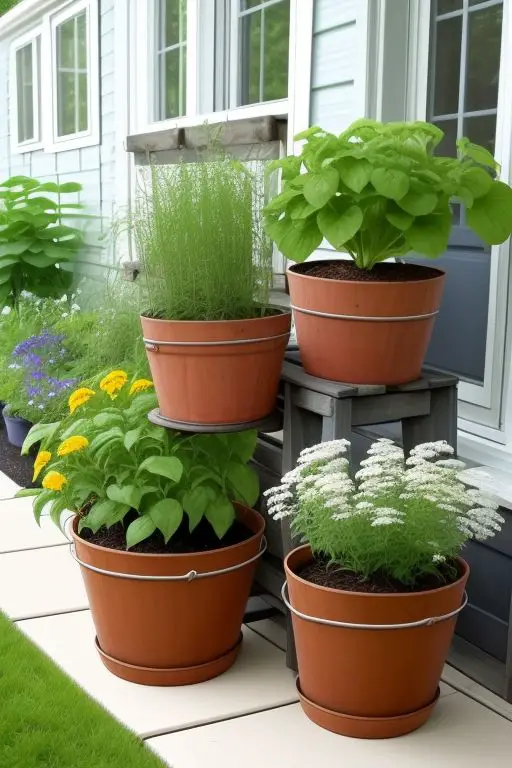
Space constraints often hinder the dream of a vegetable garden. Container gardening provides a viable solution for small apartments or homes with limited yard space. Grow diverse veggies like herbs, greens, peppers, and tomatoes in pots or repurposed items. Even dwarf varieties of larger crops thrive in containers like buckets or old wheelbarrows. Embrace container gardening in 2025!
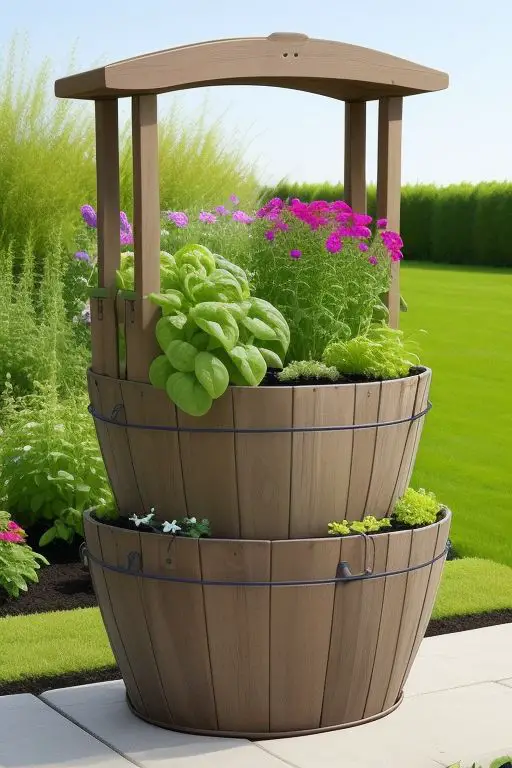
Container gardening offers a versatile and budget-friendly method for cultivating vegetables. You can easily grow them on a porch, balcony, or even indoors. Success hinges on selecting appropriate containers and guaranteeing adequate drainage. Opt for lightweight containers made of plastic or fabric for easy movement. Sufficient sunlight is crucial for your vegetables’ growth. A sun-drenched windowsill or a bright balcony provides the perfect light levels for flourishing container gardens.
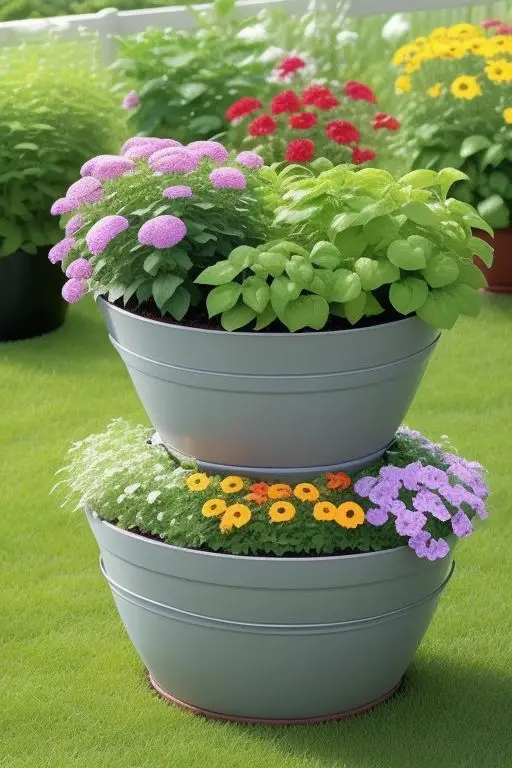
Furthermore, superior potting soil dramatically boosts plant vitality. Choose a container-specific mix for optimal aeration and drainage. Consistent watering is crucial; container gardens dry out quicker than traditional gardens. Monitor soil moisture levels closely.
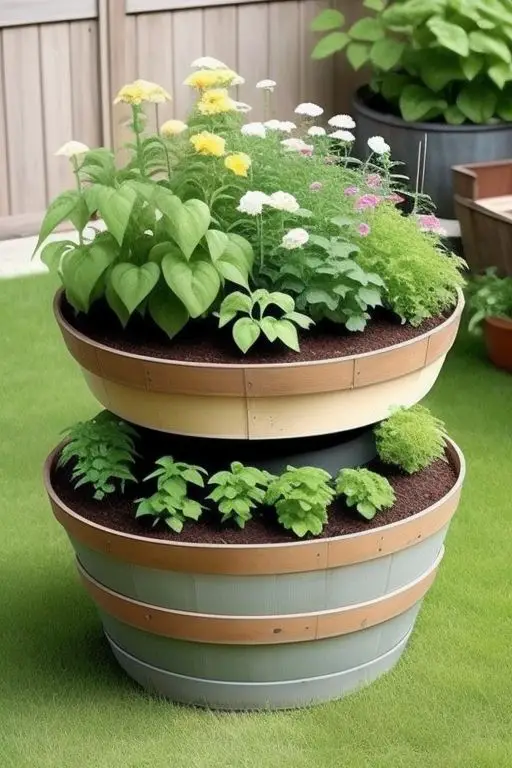
2. Raised Garden Beds for Easy Access
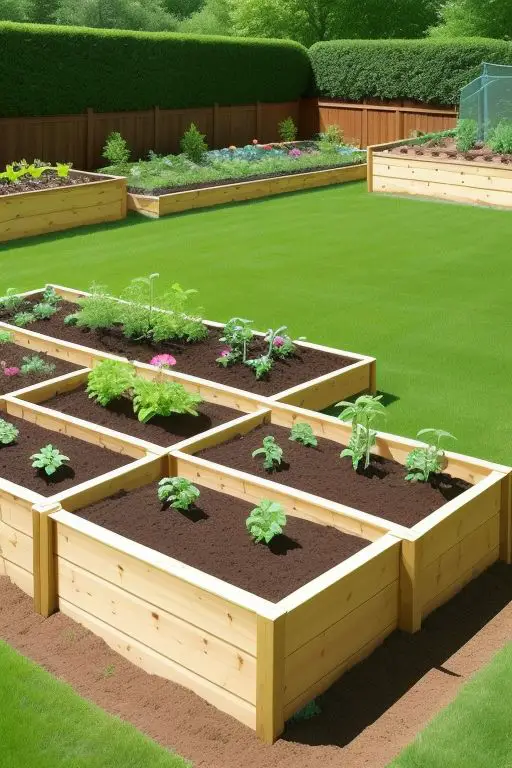
Raised garden beds offer an ideal solution if bending down to care for your plants is difficult or unappealing. These beds provide numerous advantages. They minimize bending and kneeling, making gardening more accessible for everyone. Plus, they enhance soil drainage and give you greater control over soil quality.
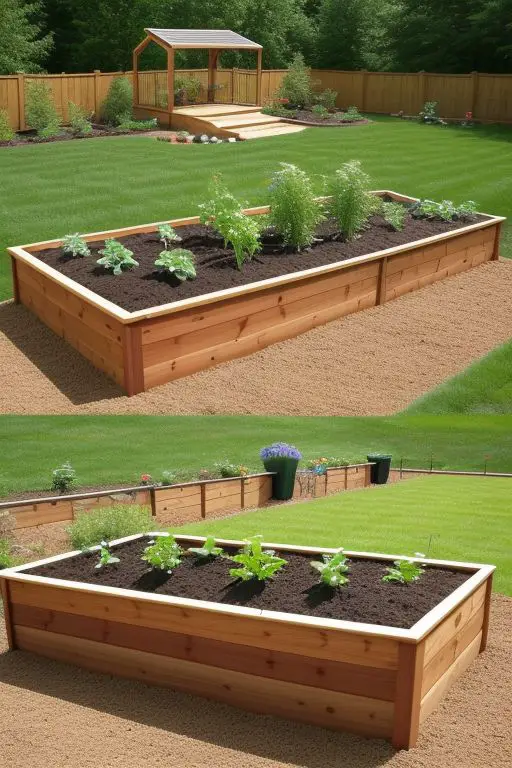
Constructing a raised garden bed is achievable with diverse materials. Consider wood, stone, or concrete blocks, aligning with your garden’s style and available area. Raised beds excel in regions with subpar or dense soil. They enable you to introduce a premium soil blend, fostering robust root development. Moreover, these beds experience faster warming in spring, facilitating an earlier planting period.
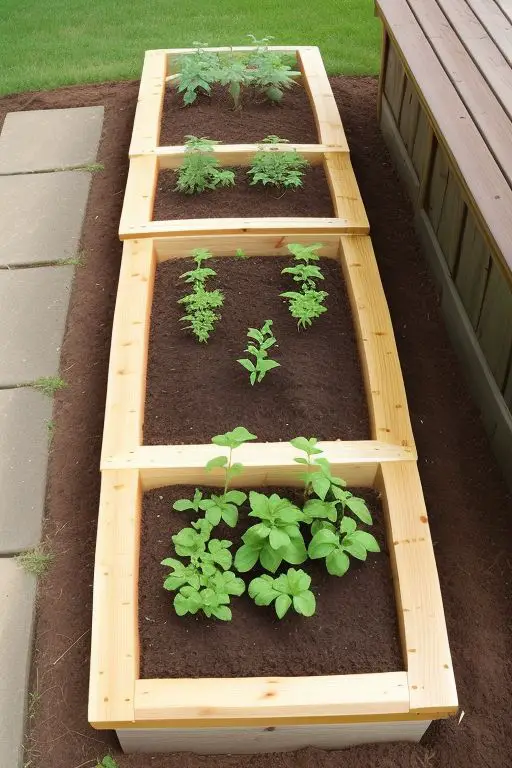
Elevated garden beds simplify weed, pest, and disease control. Plants are off the ground, improving management. Their compact design lets you grow more in a smaller area. This maximizes your vegetable garden’s yield. Planting becomes more efficient. Maintenance is less demanding. Raised garden beds are perfect for both new and experienced gardeners.
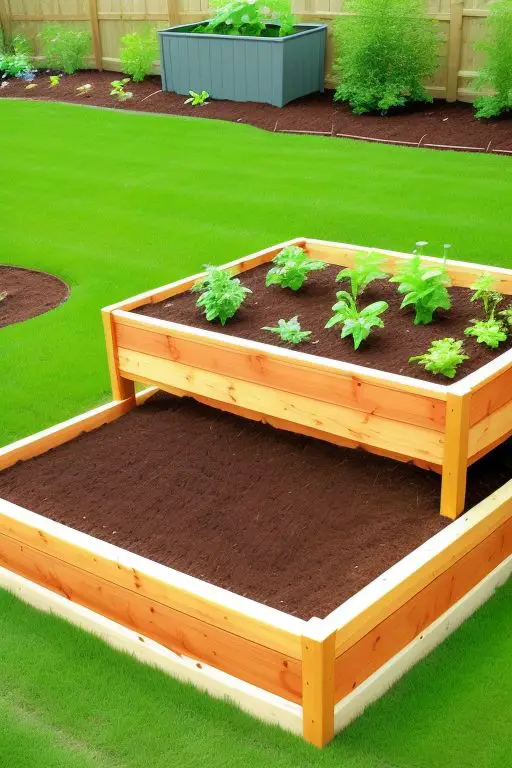
3. Vertical Gardening: Maximize Your Growing Area
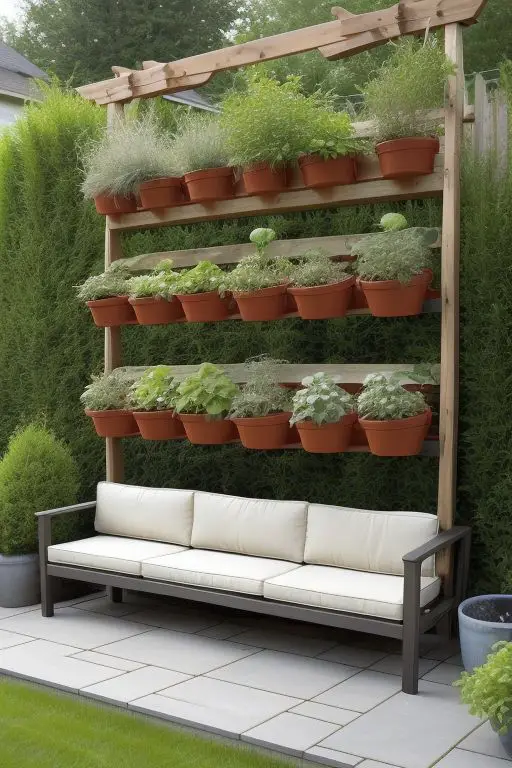
Limited on space? Vertical gardening is your solution! Grow tomatoes, beans, cucumbers, and even strawberries using trellises, plant towers, or wall planters. This method maximizes upward space. Free up ground area for more plants or outdoor features like stylish patio furniture and relaxing lounge areas.
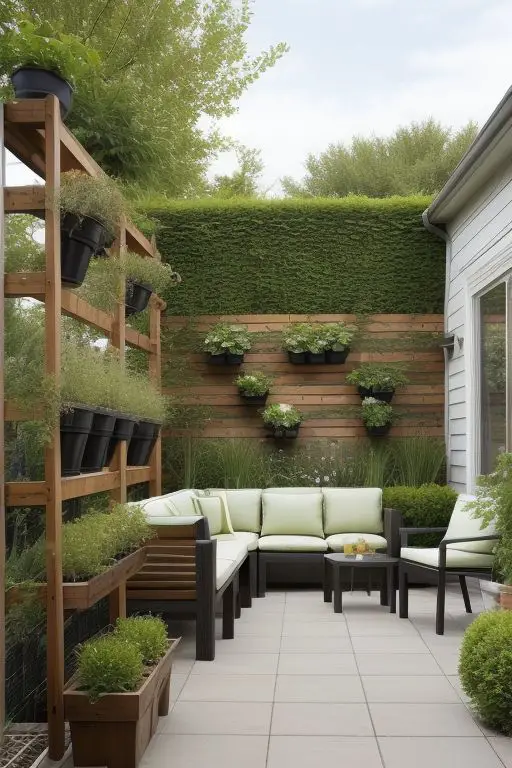
Vertical gardens offer numerous benefits. They promote better air flow, reduce pest problems, and simplify harvesting. Plus, vertical gardening is adaptable to any space. You can suspend plants or utilize walls and fences for climbing vegetables. The possibilities for creating your own vertical garden are endless.
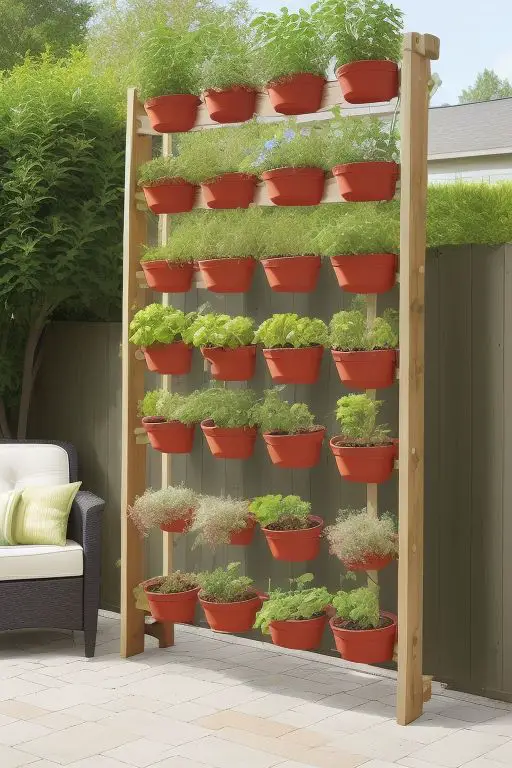
Looking for a DIY project? Build a vertical garden using repurposed wooden pallets or vintage ladders. Alternatively, buy ready-made trellises and plant towers. Ensure your chosen structure is strong enough to hold the weight of fully grown plants. Consider options available in 2025 for updated designs and materials.

4. Window Boxes for Fresh Herbs and Greens
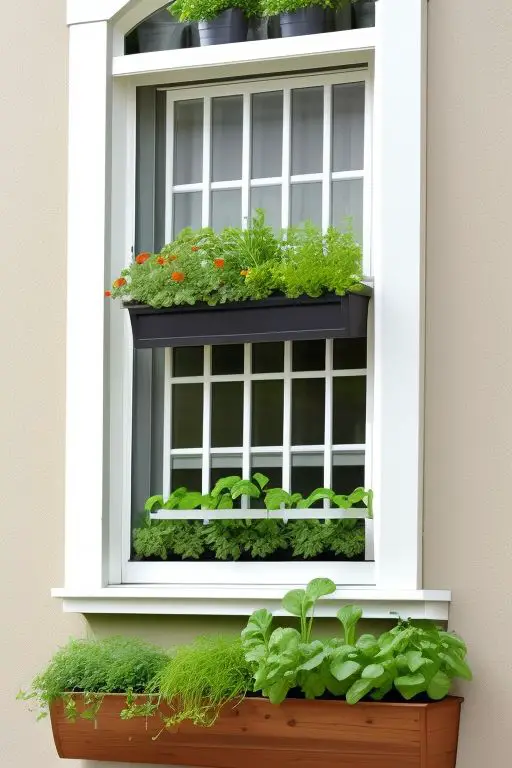
Elevate your home with window boxes! They offer a simple, space-saving method for cultivating fresh herbs and greens just outside your window. Limited space? No problem! Window boxes are the ideal solution for enjoying homegrown vegetables, even in compact areas.
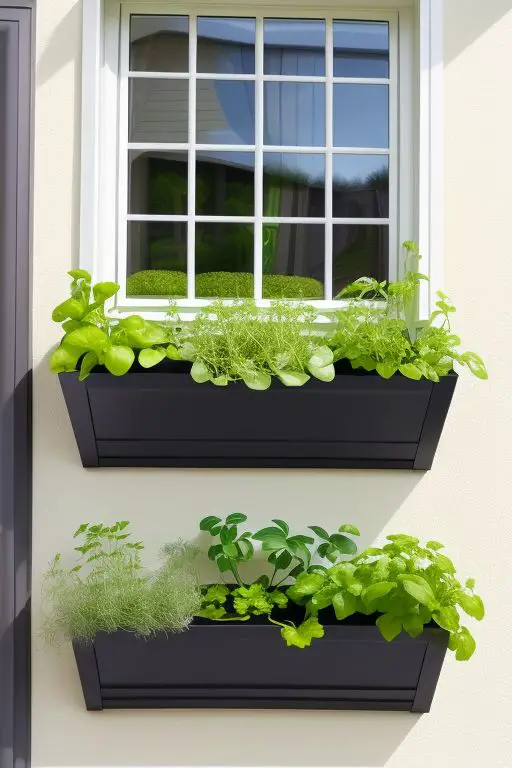
These planters are perfect for growing various herbs such as basil and parsley. You can also cultivate lettuce or even compact tomato varieties. They make a fantastic addition to any back porch or windowsill garden in 2025.
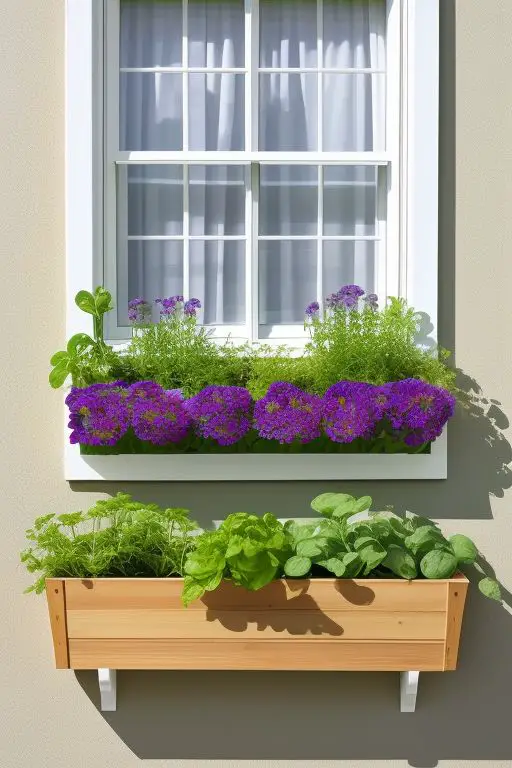
Window box gardening offers both practicality and beauty. Harmonize plant colors with your outdoor decor for a cohesive look. Ensure ample sunlight and use quality potting mix for optimal growth. Window boxes are a delightful way to brighten your home’s facade and add vibrant color in 2025.

5. Garden Tower Systems for Maximizing Vertical Growth

Want to maximize your yield in a limited area? A garden tower system is a fantastic solution. These vertical garden containers feature multiple tiers, enabling you to cultivate diverse vegetables in a small footprint. Ideal for compact yards, patios, or balconies, garden towers support a wide range of plants, including herbs, tomatoes, and peppers.
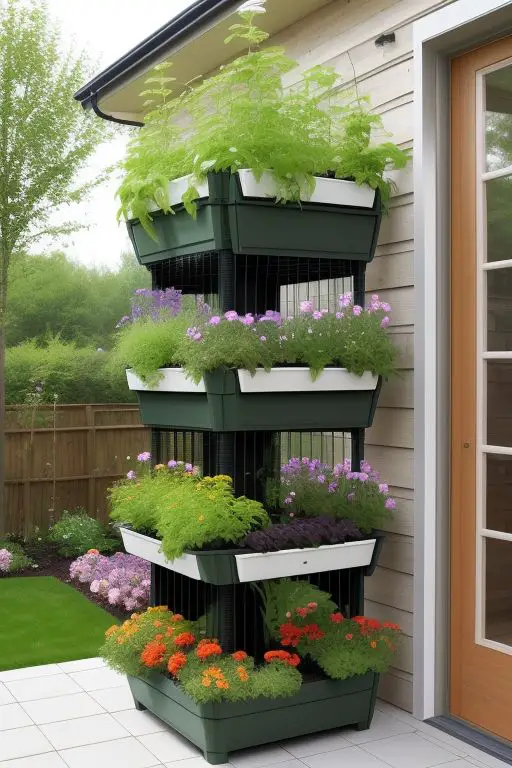
Garden towers excel at boosting water efficiency. Their self-watering design minimizes water waste, ensuring your plants receive optimal hydration.
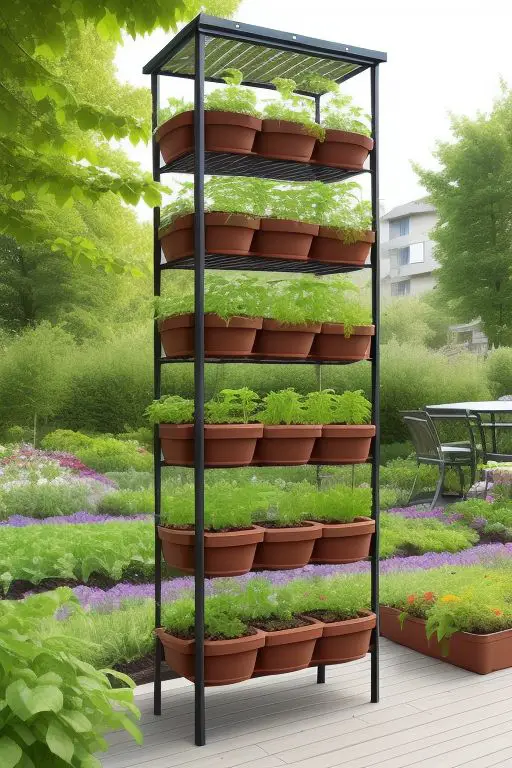
Vertical designs offer easy plant access. No more bending or kneeling! This reduces physical strain. Many systems are modular. Expand your garden as your skills and space increase.

6. The Three Sisters Garden: A Traditional, Sustainable Approach

The Three Sisters Garden is a time-honored Native American farming method. It cultivates corn, beans, and squash in a symbiotic relationship. Corn acts as a natural support for climbing beans. Beans, in turn, enrich the soil with nitrogen, nourishing all three crops.

Squash serves as a natural ground cover. It effectively blocks sunlight, suppressing weed growth and retaining soil moisture.

This approach champions sustainability while boosting your garden’s output. The Three Sisters Garden is ideal for those embracing organic methods and aiming for a low-maintenance, self-sufficient garden. Begin by planting corn. Once the corn stalks are sturdy, plant beans to climb them. Lastly, plant squash at the base to finalize this beneficial trio.
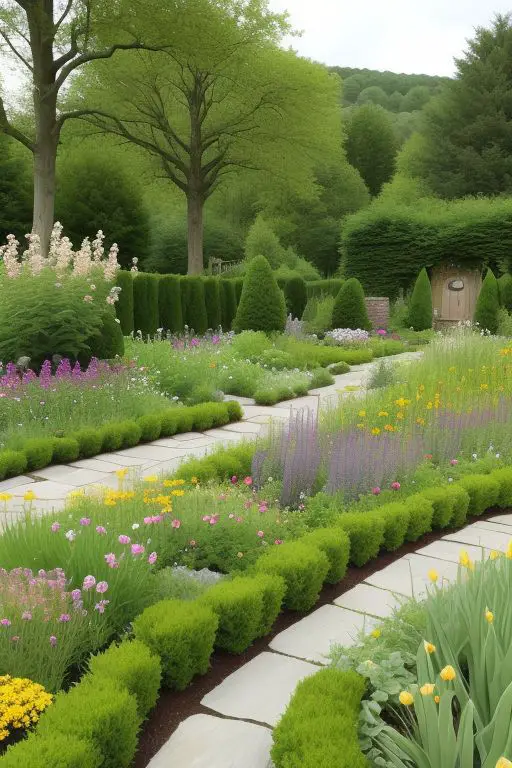
7. Edible Landscaping: Incorporating Veggies into Your Flower Beds
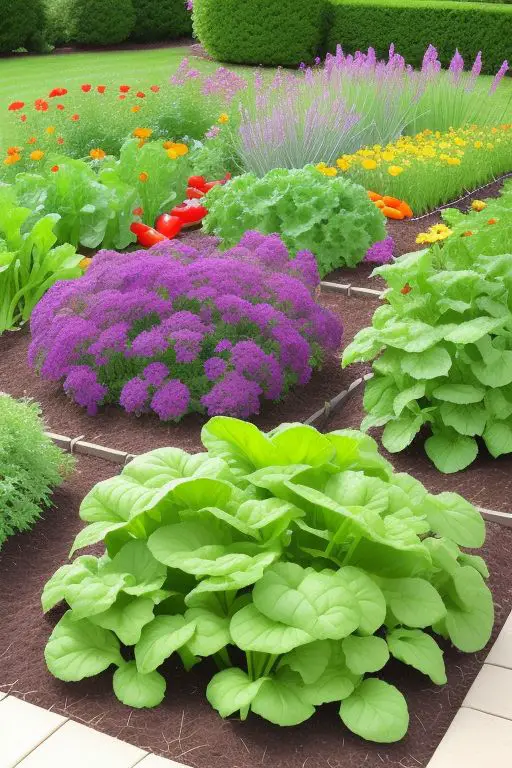
Transform your garden with edible landscaping! This innovative approach blends vegetables seamlessly into your existing flower beds. Imagine vibrant kale, spinach, and peppers adding pops of color and providing fresh, healthy food. Enjoy a beautiful and productive garden all season long.
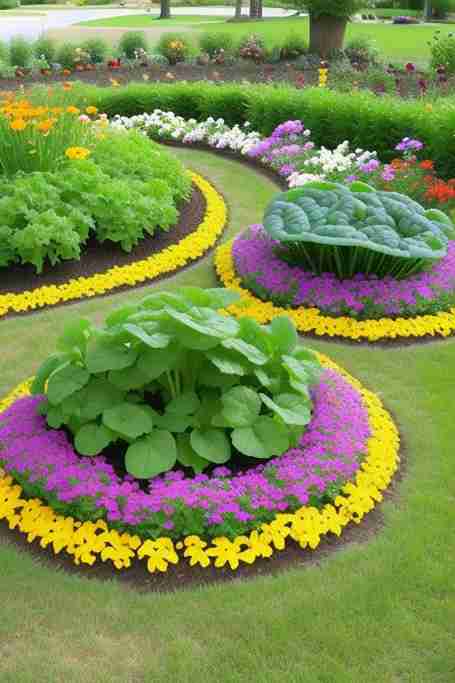
In 2025, edible landscaping is a top choice for gardeners. It allows you to cultivate vegetables without compromising your garden’s aesthetic appeal.

Forget rigid rows! In 2025, gardens are evolving. Combine vegetables with vibrant flowers and shrubs. This creates stunning visual interest. Transform your yard into a beautiful, relaxing outdoor escape.
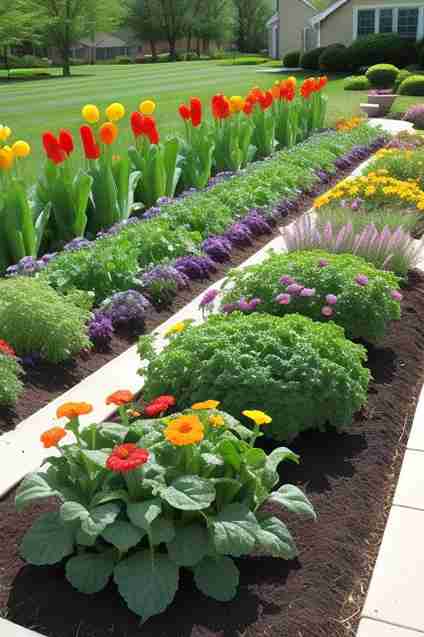
8. DIY Hydroponic Systems for Growing Veggies Indoors

Hydroponics offers a cutting-edge approach to vegetable cultivation, eliminating the need for soil. It’s ideal for apartment dwellers or those in challenging climates. In a hydroponic setup, plants obtain essential nutrients from a specially formulated water solution.

This innovative method enables effective indoor cultivation without soil.

Creating a hydroponic garden is simpler than you might think! Several systems are available, including wick systems, deep water culture, and aeroponics. It may take practice, but growing vegetables like lettuce, spinach, and herbs indoors hydroponically is very satisfying. Best of all, you can grow food all year, regardless of the weather.
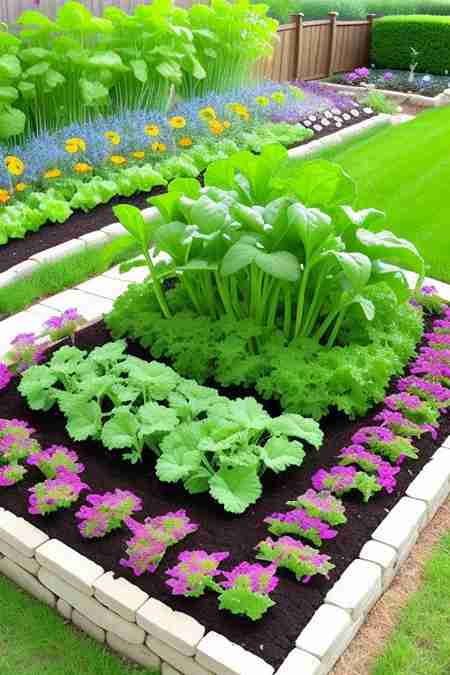
9. Herb Spiral Gardens: Functional and Beautiful

Herb spiral gardens are both beautiful and practical. They maximize space by creating diverse microclimates within a small footprint. The spiral design allows you to grow a variety of herbs with different needs. The top, sunny and dry, is ideal for rosemary and thyme. The lower, shadier, and moister areas suit mint and parsley perfectly. This innovative design ensures optimal growing conditions for each herb.
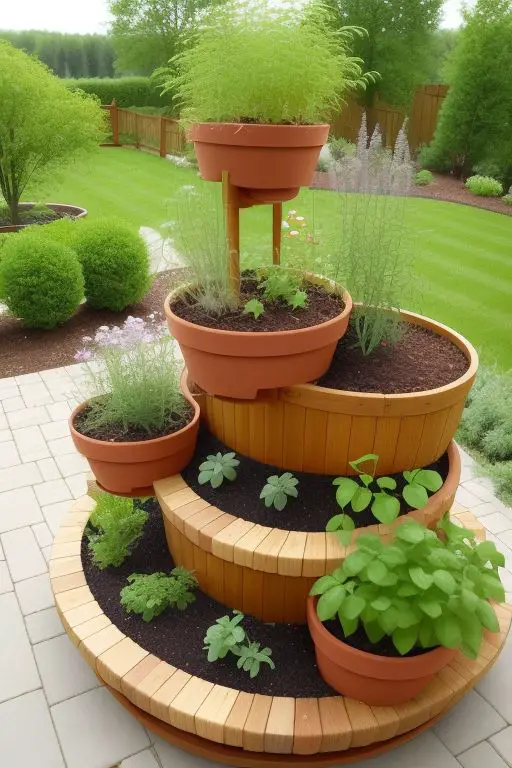
Creating an herb spiral is easy and doesn’t need much room. A small area in your garden or on your patio is perfect. It’s also a fantastic method for cultivating diverse culinary and medicinal herbs. Enjoy fresh herbs throughout the entire year!
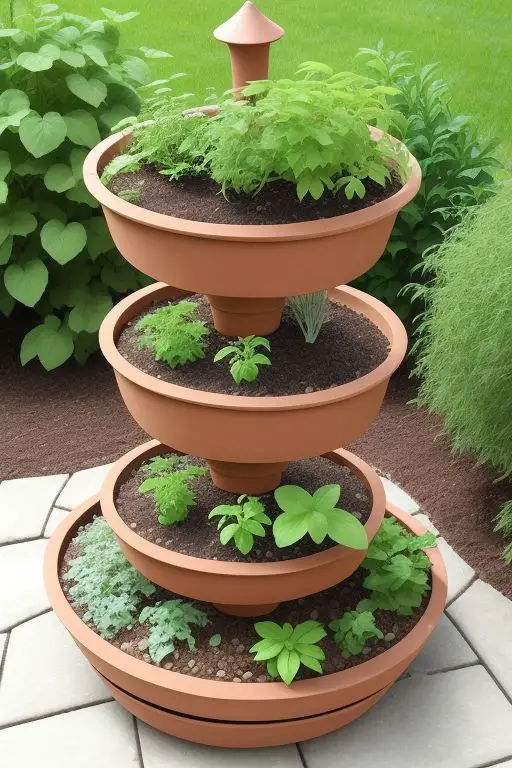
This sustainable and easy-care gardening approach is sure to wow visitors. Plus, you’ll have fresh, homegrown ingredients right at your fingertips!
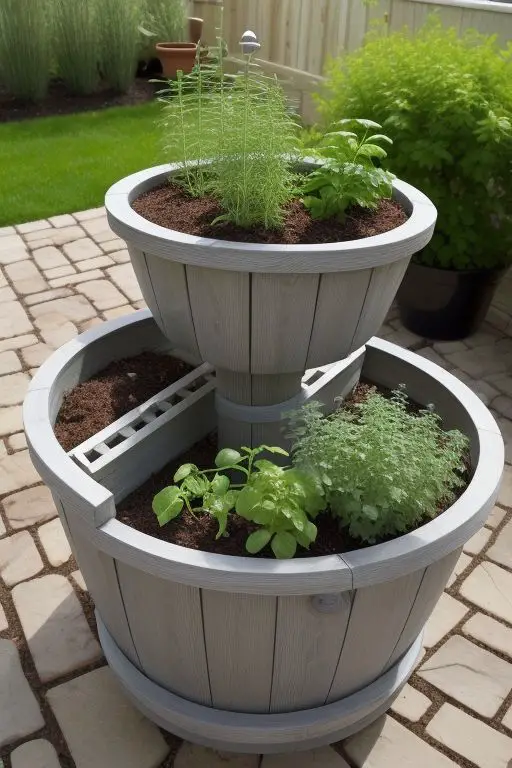
10. Companion Planting: Grow Veggies and Flowers Together

Companion planting involves strategically pairing vegetables and flowers for mutual benefit. Certain plants naturally deter pests. Others attract helpful insects or enrich the soil. For instance, marigolds planted with tomatoes can repel aphids. Basil can also boost tomato flavor and growth.
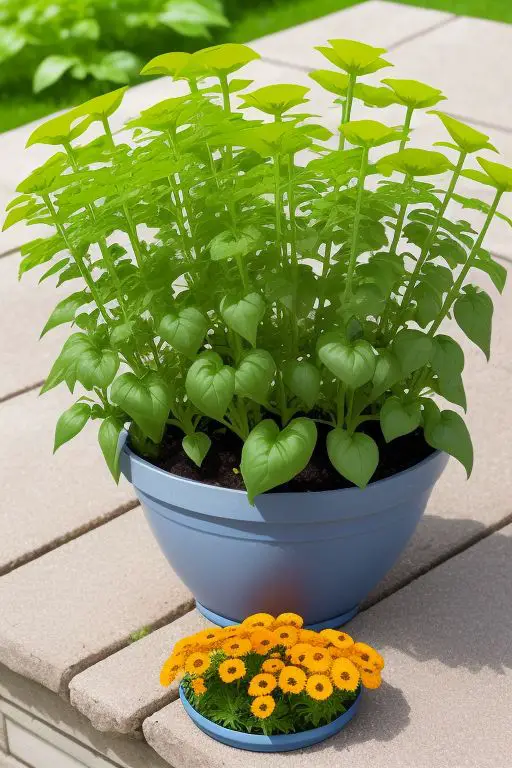
Companion planting lets you design a thriving, diverse garden that’s both visually appealing and highly productive. The secret lies in knowing which plants benefit each other and which ones should be separated.
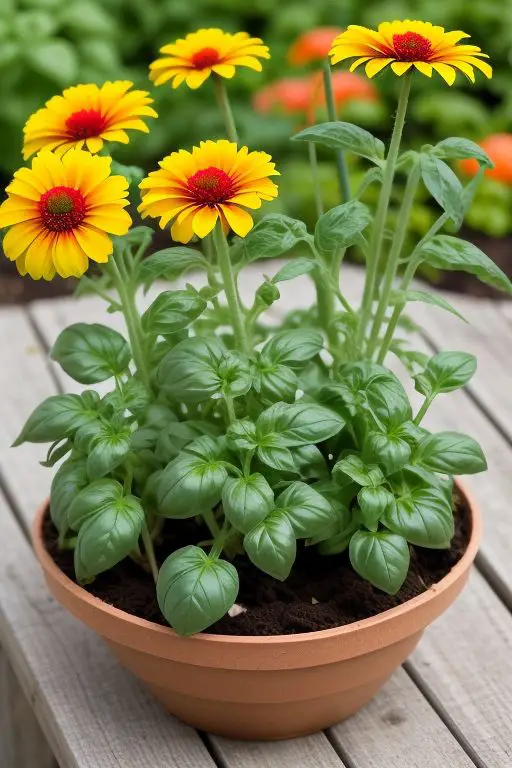
Discover a wealth of updated resources for optimal companion planting in 2025. Learn how to pair plants effectively, fostering a thriving and sustainable garden ecosystem.
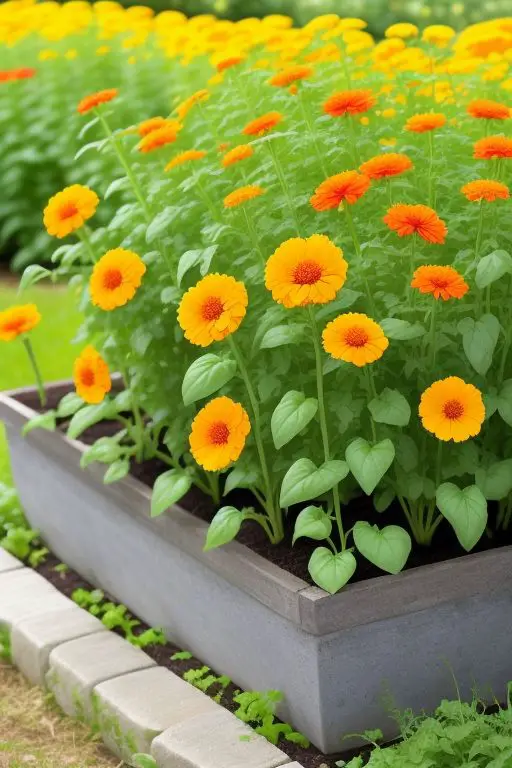
11. The Raised Herb Garden: Grow Fresh Flavors Right Outside Your Door
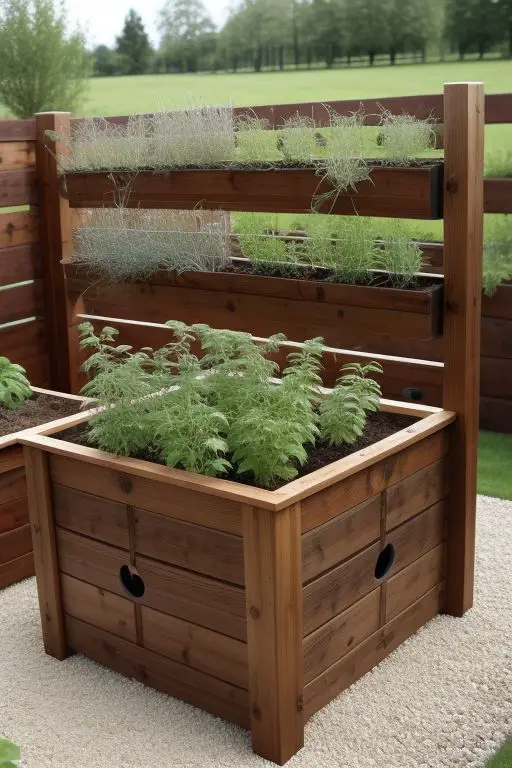
Love fresh herbs but short on space? A raised herb garden is your perfect answer! Constructing a compact raised bed just for herbs keeps them handy near your kitchen. Enjoy easy access while maximizing space for other plants. Basil, oregano, thyme, and rosemary flourish in these elevated beds. Imagine the fresh flavors at your fingertips!
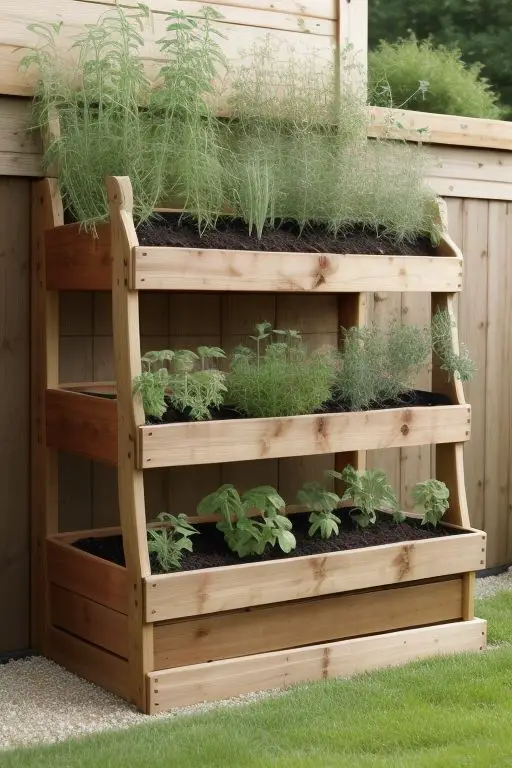
Elevated herb gardens enhance soil drainage, preventing waterlogged herbs. They’re perfect for patios, balconies, or near your kitchen. These gardens are easy to build with few tools and materials. Customize them to match your style and space. Choose from rustic wood, brick, stone, or modern metal designs to complement your outdoor area.

Raised herb gardens offer simpler upkeep and weeding. They also safeguard your herbs from accidental damage, a real advantage for fragile varieties like parsley and cilantro. Combining perennial and annual herbs in your raised garden ensures continuous harvests. Enjoy fresh herbs all year for cooking, teas, and even natural remedies.
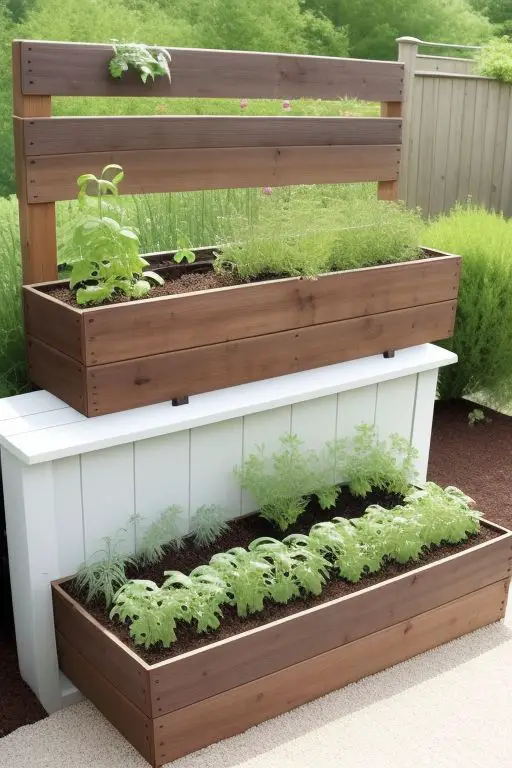
12. Grow Veggies in an Old Tire Garden
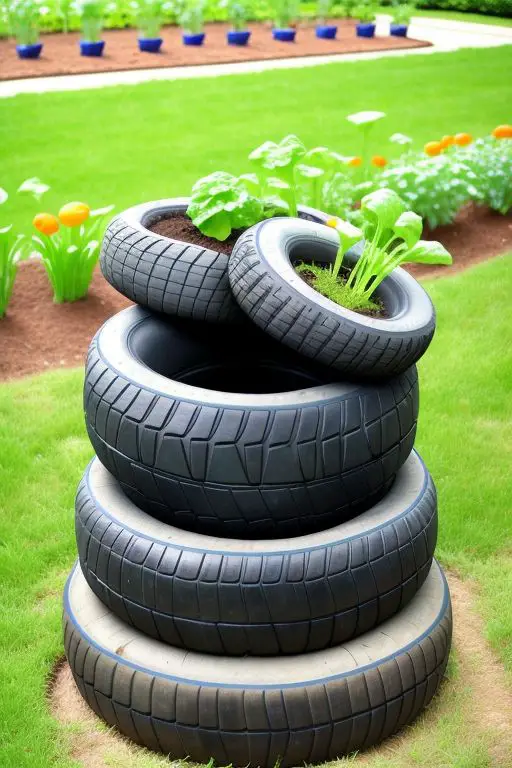
Transforming used tires into planters offers an innovative and eco-friendly gardening approach, perfect for budget-conscious individuals or those seeking distinctive garden designs. Stacking tires forms a raised garden bed, ideal for growing root vegetables like potatoes, carrots, and onions. It also works well for other plants such as lettuce, spinach, and peppers. This method promotes sustainable gardening practices in 2025.
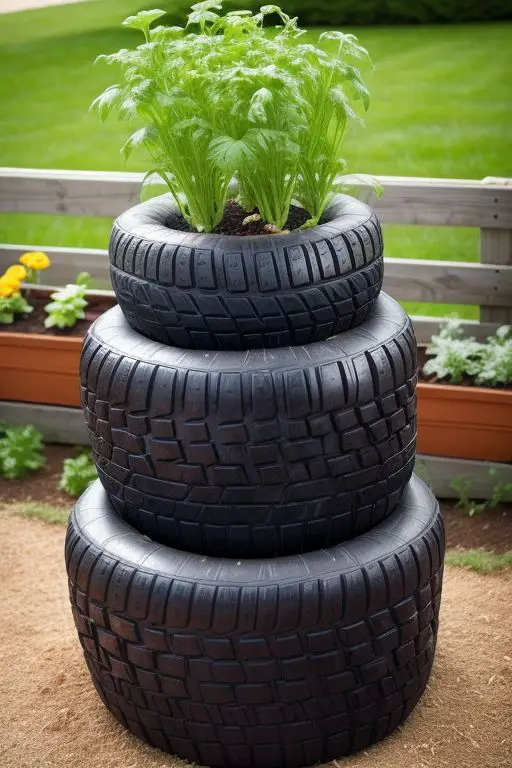
Begin by stacking one or two used tires. Fill them with a high-quality soil blend. Then, plant your chosen vegetables. For a more personalized touch, paint the tires with vibrant colors. This adds a playful and unique aesthetic to your garden. Tires offer great drainage and retain warmth, benefiting plants, particularly in colder regions. Remember to line the tires with newspaper or landscape fabric. This will stop weeds from growing into your garden.
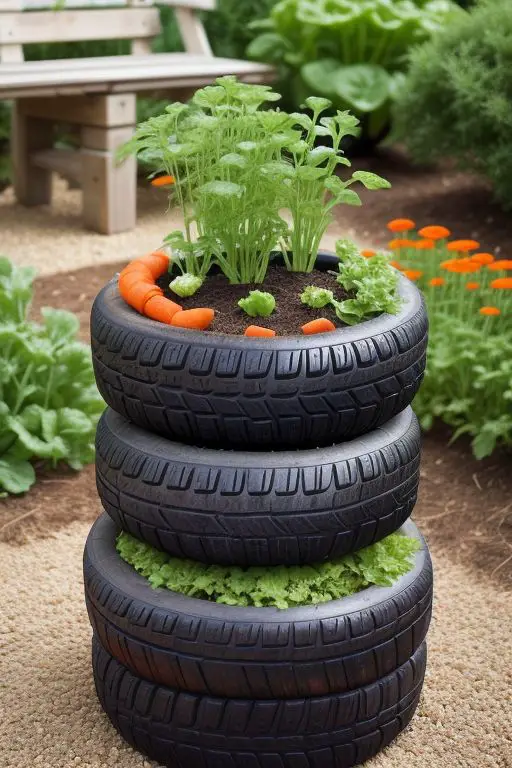
Tire gardening offers a budget-friendly and sustainable gardening method. It repurposes discarded tires, minimizing waste. Perfect for small patios or large backyards, this creative solution is eco-conscious, practical, and enjoyable for growing vegetables.
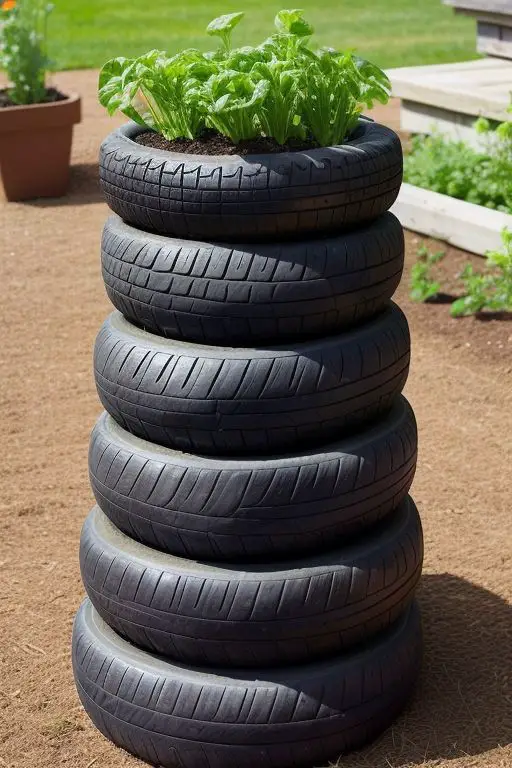
13. The Straw Bale Garden: An Easy Option for Beginners
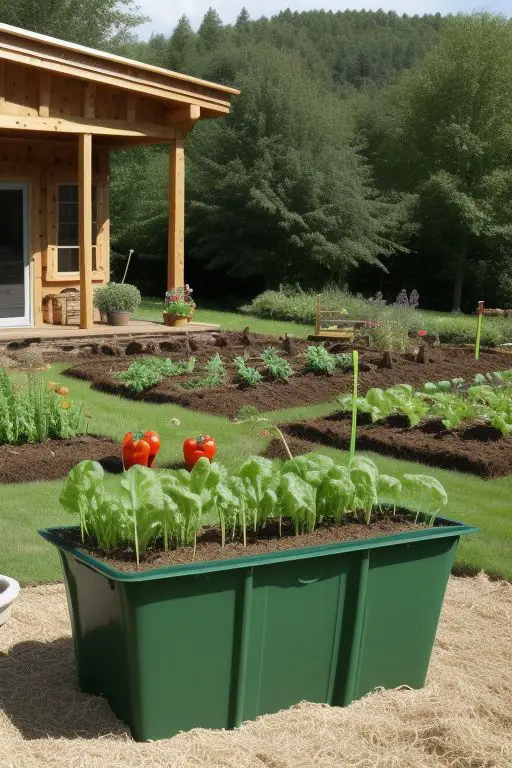
Straw bale gardening is a modern, simple technique perfect for beginners. It’s ideal for growing vegetables where soil is poor or space is limited. Straw bales become the plant “containers,” providing a soil-like medium for tomatoes, peppers, zucchini, and leafy greens like lettuce and spinach.
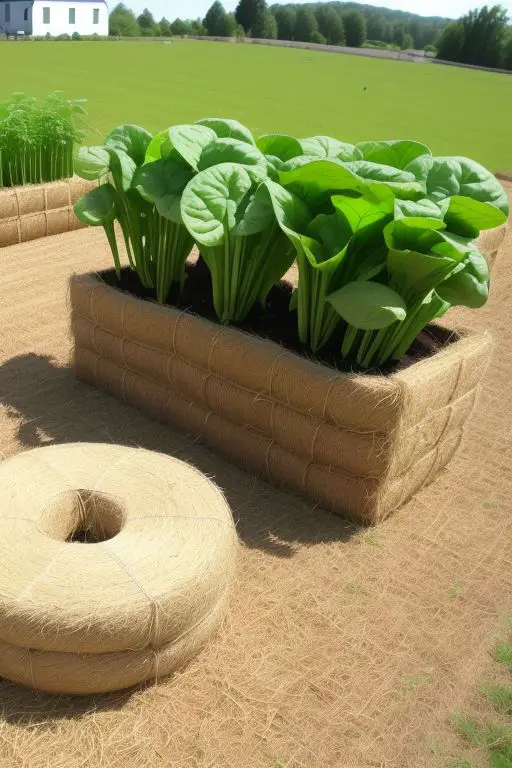
Begin your straw bale garden by conditioning the bales. Water them consistently for 10-14 days. This allows the organic matter to decompose, creating a good growing base. After conditioning, plant your vegetables directly into the bales. Cut small holes in the straw and add compost or potting mix. This gardening style is great for people with back or knee problems. It minimizes bending and kneeling while caring for your plants.
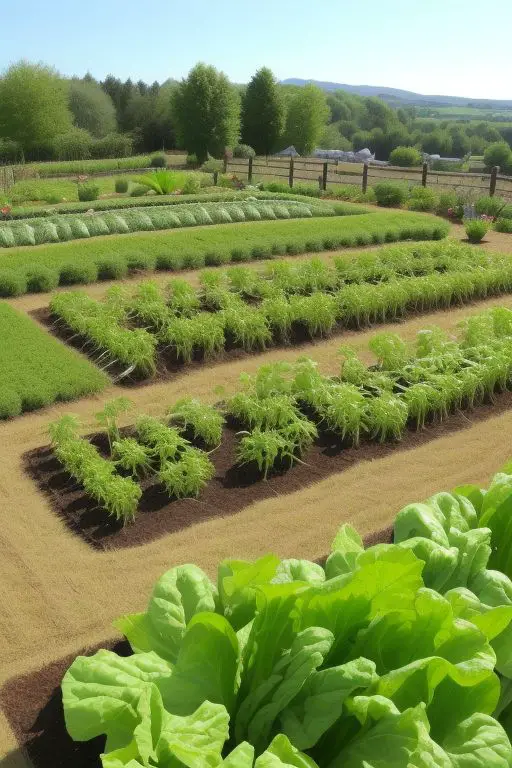
Straw bale gardening offers a key benefit: a natural weed barrier. This significantly cuts down on garden upkeep. Plus, straw bales excel at retaining moisture, preventing plants from drying out rapidly. The ultimate perk? Once the growing season ends, these bales transform into valuable compost or mulch. This makes straw bale gardening a truly eco-conscious and sustainable choice for 2025 gardeners.
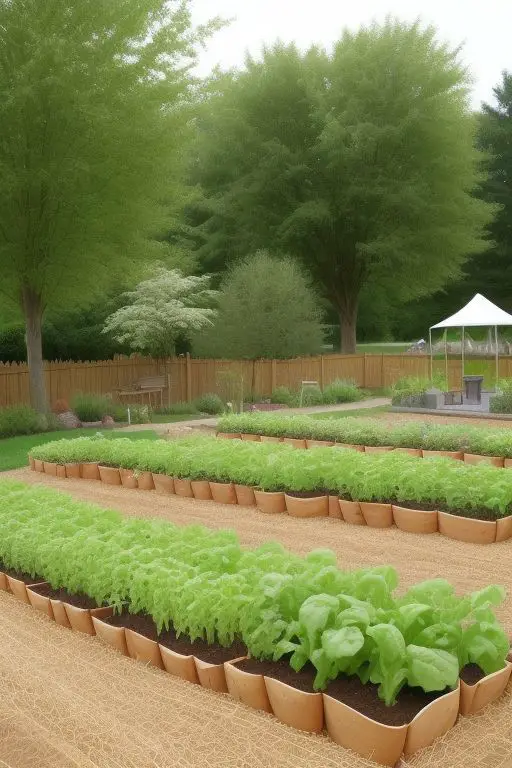
14. Community Gardening: Growing Together
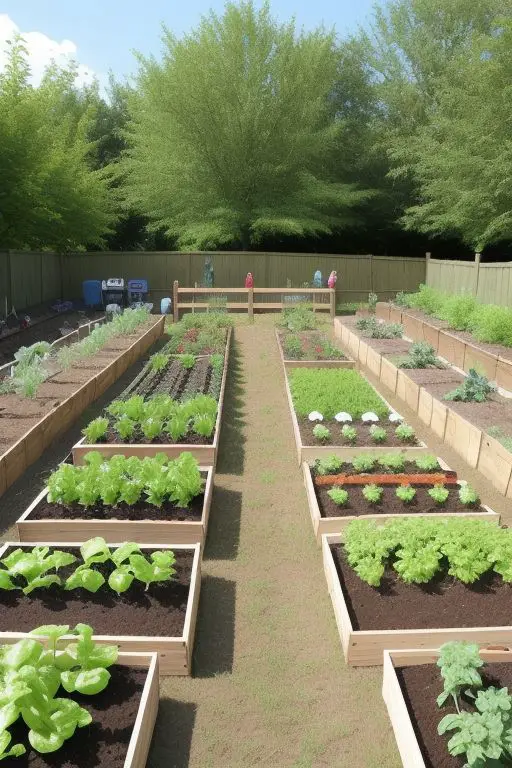
Do you enjoy gardening but lack the space or means for your own garden? Joining a community garden is a fantastic solution! It allows you to cultivate your own food and connect with fellow gardeners. Community gardens offer shared plots where individuals or families can rent space, grow vegetables, and enjoy the harvest together.
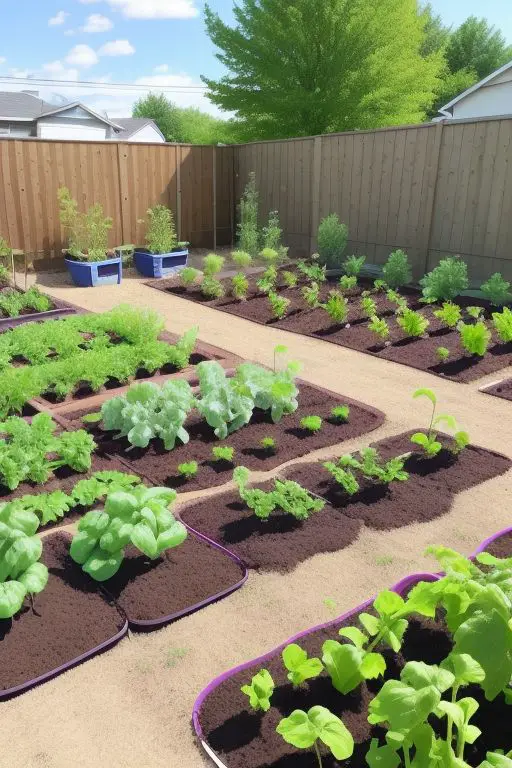
Community gardens offer more than just fresh produce. They build strong communities and promote environmental responsibility. These gardens create spaces for neighbors to connect, fostering community spirit and local pride. New gardeners benefit greatly, learning from seasoned experts, sharing advice, and joining workshops and events.
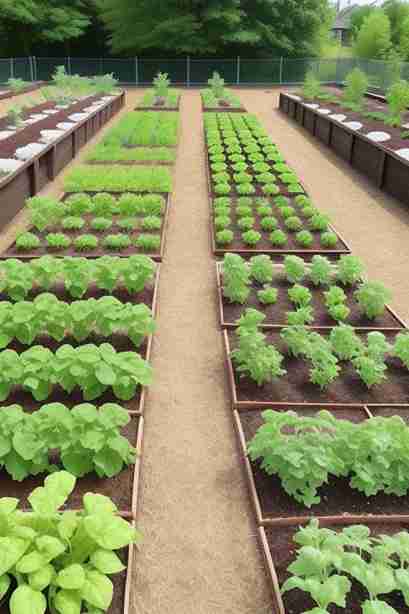
Dreaming of homegrown tomatoes or eager to contribute to local green initiatives? Community gardens offer accessible gardening plots and shared resources, opening doors that might otherwise remain closed. It’s a fantastic opportunity to maximize your gardening passion while fostering strong community bonds in 2025.
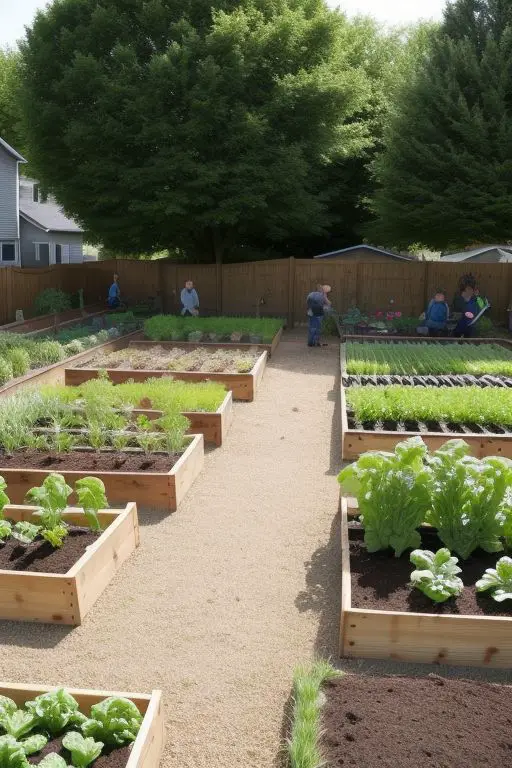
15. Greenhouse Gardening: Extend Your Growing Season
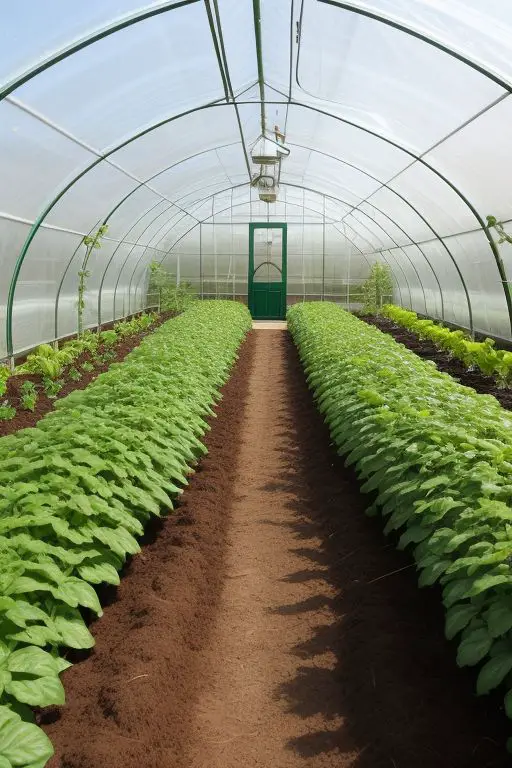
Greenhouses revolutionize gardening, especially in regions with brief growing seasons or erratic weather. They extend your harvest by creating a warm, secure space for plants. Start planting earlier in spring and harvest later into autumn or even winter with a greenhouse.
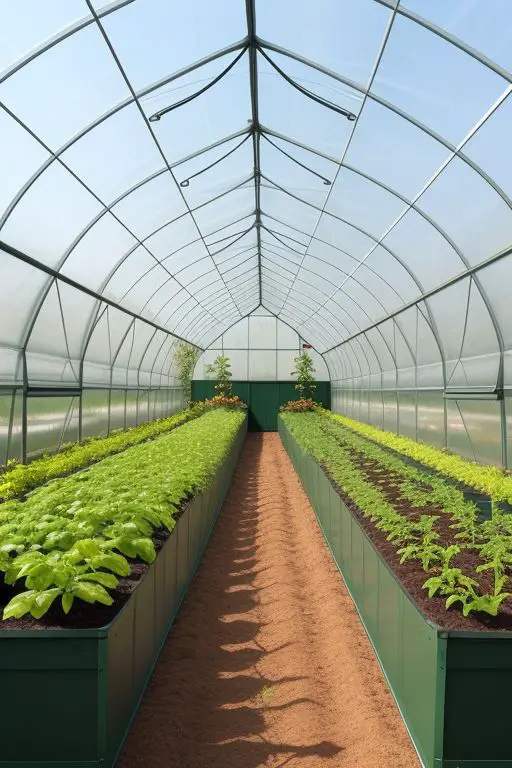
Creating a greenhouse doesn’t need to be difficult. Many budget-friendly, DIY greenhouse kits are now available. If space is limited, consider a small, portable greenhouse. Greenhouses enable year-round cultivation of diverse vegetables. Grow tomatoes, peppers, and leafy greens regardless of the season. The controlled temperature inside ensures optimal growth, irrespective of the external climate.
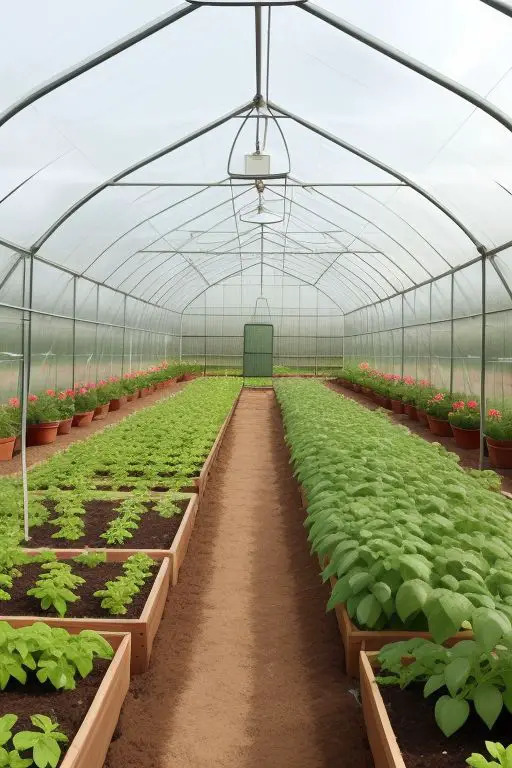
Greenhouses offer more than just a longer growing season. They shield your plants from pests and harsh weather. They also create a space for controlled experiments. Explore unique vegetables or master hydroponics and aquaponics. Your greenhouse unlocks endless possibilities.
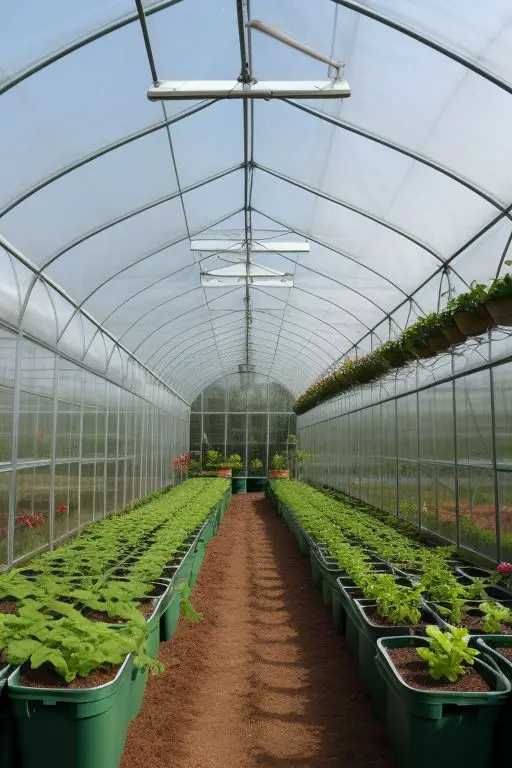
16. A Pollinator-Friendly Veggie Garden: Attracting Bees and Butterflies
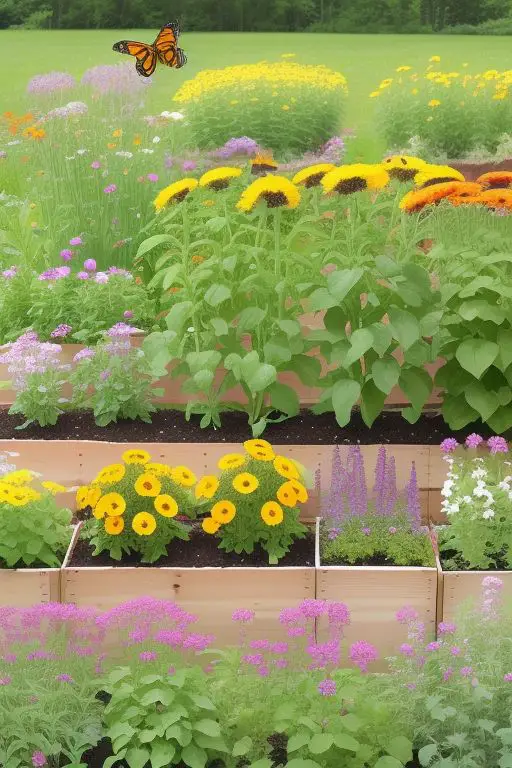
Bees and butterflies are crucial pollinators for vegetable gardens. They boost flower pollination, leading to bigger harvests. A pollinator-friendly garden helps these creatures thrive and makes your veggie patch more productive. Consider creating one in 2025!
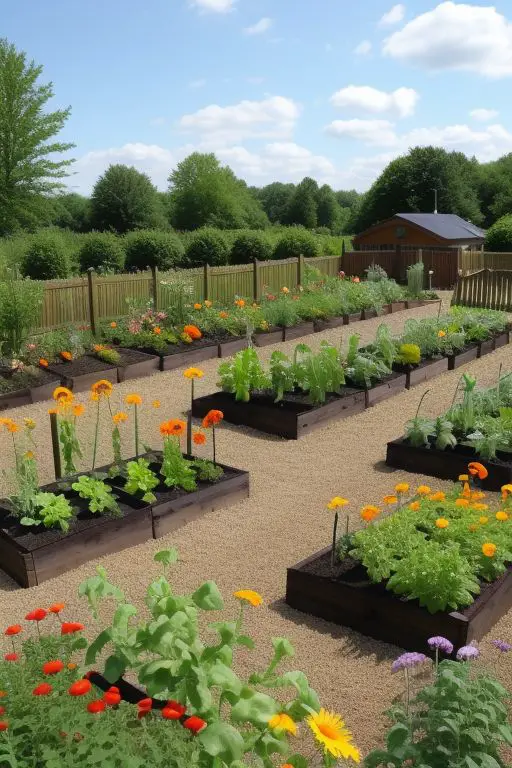
Boost your garden’s appeal to pollinators! Plant bee and butterfly favorites like lavender, sunflowers, marigolds, and echinacea. These vibrant additions will draw pollinators to your garden, increasing your vegetables’ pollination success.
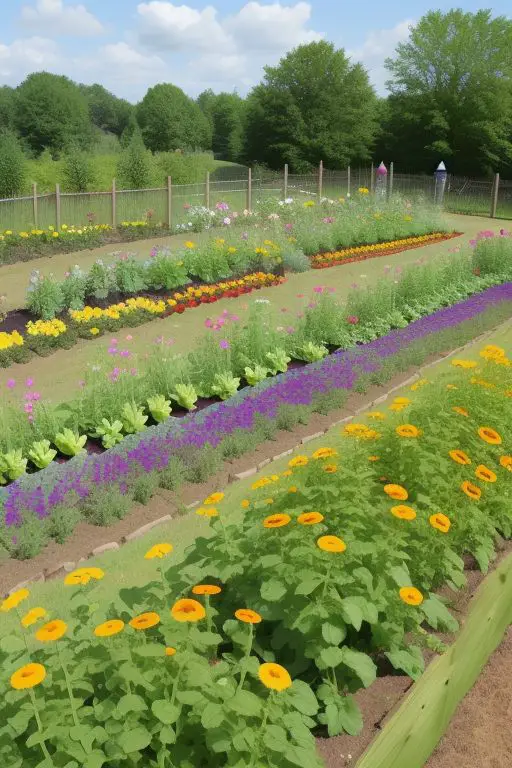
Protect pollinators by avoiding harsh pesticides and chemicals in your garden. These can be harmful. Choose natural pest control methods instead. Consider companion planting or introducing beneficial insects like ladybugs. A pollinator-friendly veggie garden benefits the environment and leads to a richer harvest.
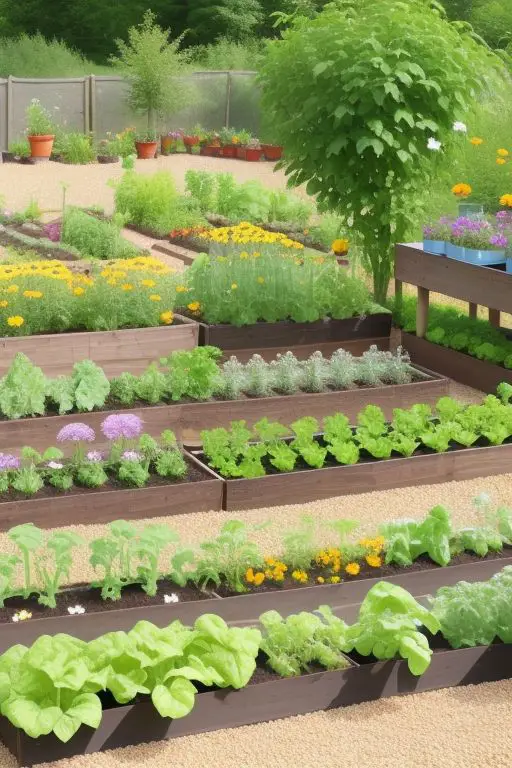
17. Aquaponics: Integrating Fish and Plants for a Self-Sustaining Garden
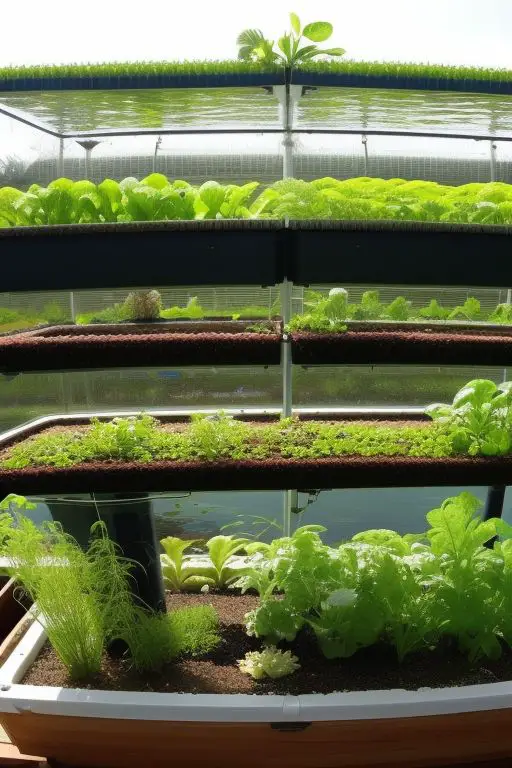
Aquaponics represents the future of sustainable gardening. It seamlessly integrates aquaculture (fish farming) and hydroponics (soilless plant cultivation). In this innovative setup, fish byproducts nourish the plants. Simultaneously, the plants naturally cleanse the water, fostering a balanced and thriving environment. Aquaponics is perfect for anyone wanting to cultivate fresh produce and raise fish in a space-saving, eco-friendly manner.
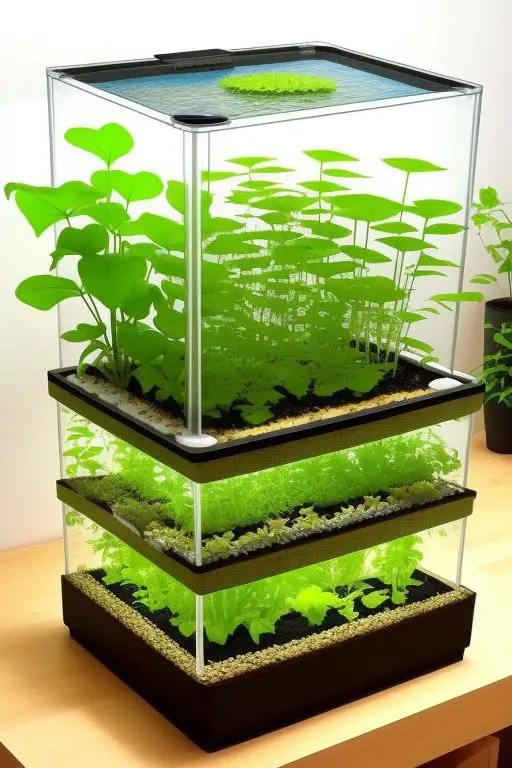
Creating an aquaponics system is more involved than traditional gardening. However, the benefits are significant. You’ll require a fish tank, a plant growing bed, and a water circulation pump. Excellent aquaponic vegetables include lettuce, kale, tomatoes, and cucumbers. Tilapia or goldfish are popular fish choices for these systems.
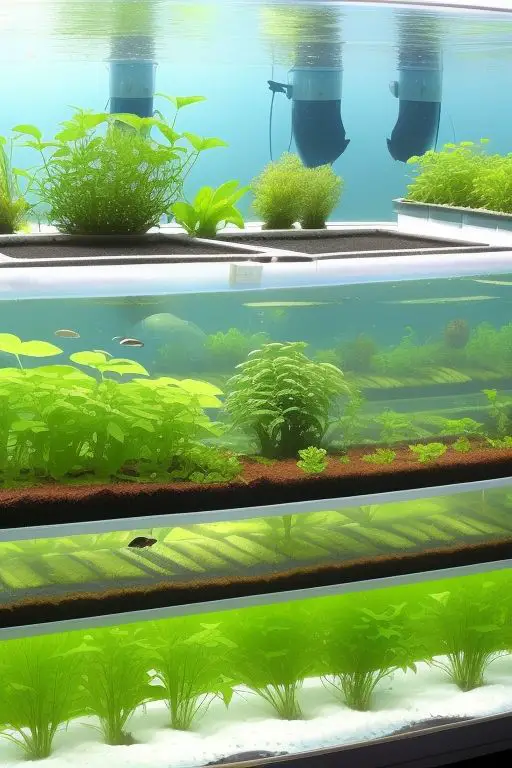
Aquaponics excels in water conservation and adapts to indoor or outdoor settings. It’s a perfect sustainable choice for small spaces, allowing you to cultivate plants and raise fish. Enjoy fresh, eco-friendly produce all year long.
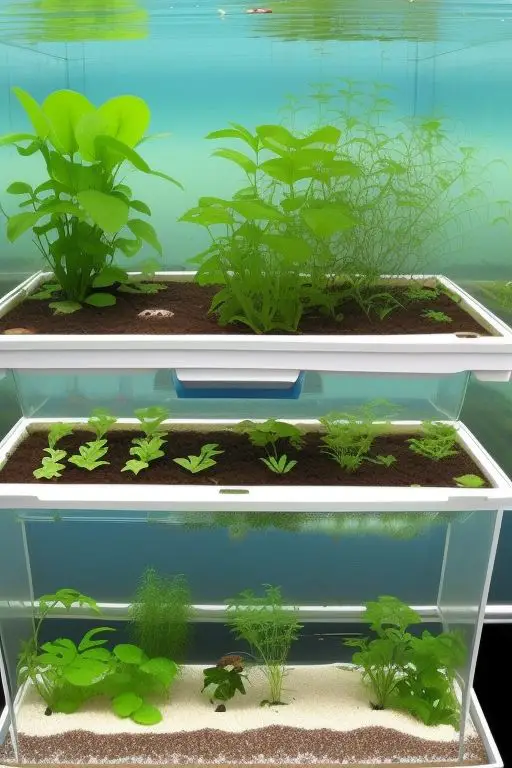
Conclusion: Cultivating Your Dream Veggie Garden
So, there you have it! Discover 17 veggie garden ideas to turn your area into a thriving, fruitful, and eco-friendly garden. No matter your space constraints, desire to lengthen your growing period, or interest in new methods like aquaponics, a perfect solution awaits you.
Starting your garden? Each approach has unique advantages. Improve soil, cut down on upkeep, or add beauty to your yard. Success comes from picking what fits your life, space, and goals best. Consider these factors as you plan your 2025 garden.
Ready to get your hands dirty? Let’s start your own vegetable garden! With a bit of effort and some innovative ideas, you’ll be enjoying delicious, homegrown veggies in no time. Happy gardening in 2025!